cactus
New Faces
We welcome a number of new team members
Collaboration
The key to success in fighting cacti invasion.
Weed Awards Mat Savage cleans up at awards.
THE HARRISIA CACTUS WEEVIL: A BIOLOGICAL CONTROL AGENT REINTRODUCTION
How invasive is your cactus?
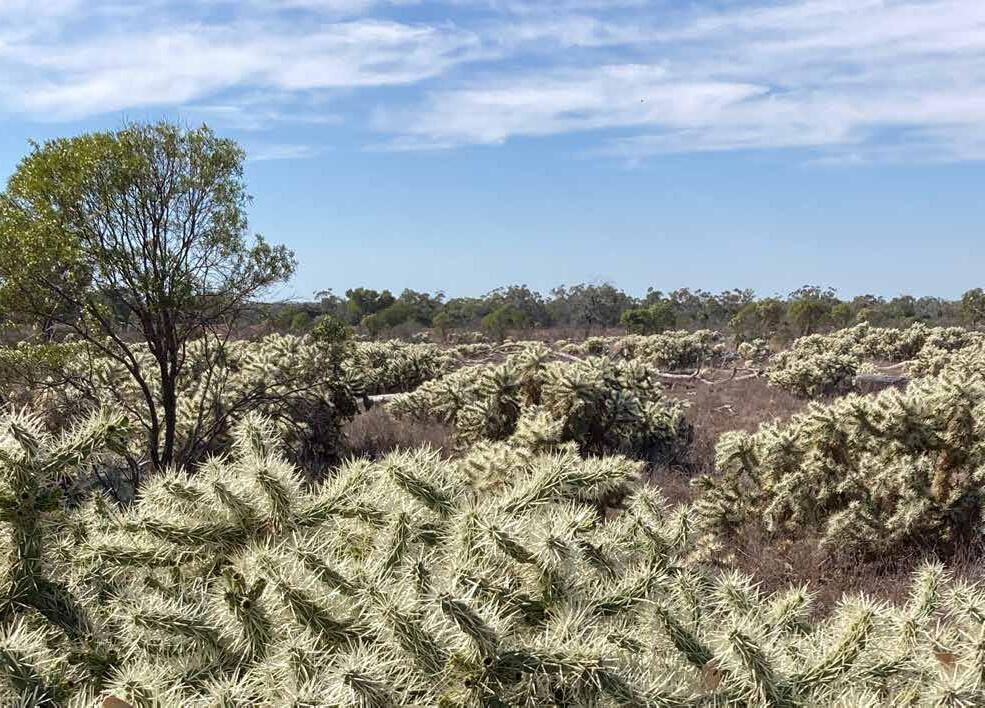
2 6 8
ALL YOUR UP-TO-DATE CACTUS NEWS, EVENTS AND INFORMATION SPRING 2023 Quarterly
FOR
Photo Credit: Debi Bancroft
NSW NORTH WEST REGION
Cochineal impact and spread monitoring
NEW FACES
With the Hudson pear control program announced in late 2022, comes two new staff members.
Todd
How invasive is your cactus?
Monitoring continues, assessing the impact and spread of the cochineal biocontrol agent, Dactylopiustomentosus, on Hudson pear (Cylindropuntia pallida) at two sites in the north west of NSW.
These long-term monitoring sites are at Cumborah and Grawin and were revisited in August this year by a team led by Dr Andrew McConnachie (DPI NSW) and Royce Holtkamp (Horizon Ecological Consulting) with staff from LLS NSW and NSLA staff.
Data was collected to measure the impact and dispersal of the cochineal. Considering the torrential rain in 2022 the two sites have none of their reliase plants alive, and more encouraging is the significant reduction in regrowth and juvenile plants. In addition, a high percentage of established plants in both sites have evidence of cochineal activity. With a dry summer predicted, cochieneal density at both sites should improve before November, when they are monitored again.
In addition to the fixed transect monitoring, multi spectral imagery was captured using a drone. The use of drones enables reasearchers to assess the spread and the impact of the biocontrol agent over larger, more inaccessible areas.
These two monitoring sites continue to provide useful data in the eradication program of the Hudson pear, as does the mass rearing facility in Lightning Ridge. If you have Hudson pear on your property, the mass rearing facility at Lightning Ridge is stocked with Hudson pear cochineal and are ready to be released.
Contact Mat Savage on 0427 253 463 or Todd Pallister on 0457 939 055
Meet the new Harrisia Cactus Project Officer
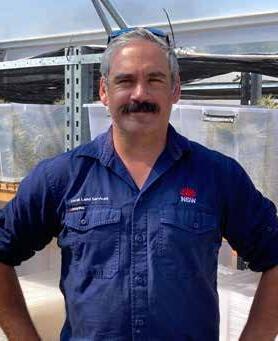
Debi Bancroft has joined Northern Slopes Landcare Association in Bingara as the new Harrisia Cactus Project officer, working in collaboration with NSW Local Land Services (NSW LLS) she was handed the reins in late July.
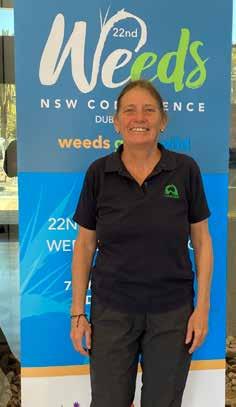
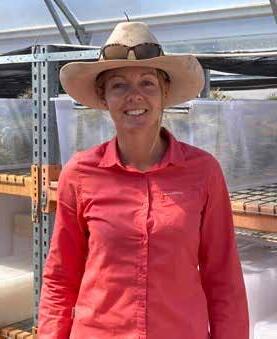
Deb’s role will see her working alongside both government and non-government bodies to engage with landholders and community groups to get the word out about this invasive weed and help stop the continuing spread.
With a keen interest in education and community engagement. Deb looks forward to continuing the great work already completed.
“Although I hit the ground running, I am always available for a catch up relating to this invasive weed”.
“If you live in an incursion area or are concerned about the potential of Harrisia please contact me”.
2 | CACTUS QUARTERLY
Pallister has joined the team as the Hudson Pear Project Officer and Rachel Turner Bio-security Officer both based in Walgett employed by North West Local Land Services.
-
Debi Bancroft. Harrisia Cactus Project Officer, Ph 0438 353 519 cor email
cacti@nsla.net.au
Rachel
753 170
Turner, Bio-security Officer Ph: 0417
Todd Pallister, Hudson Pear Project Officer Ph: 0457 939 055
Prickly Pear reappearing
PRIORITY CACTI NEAR YOU!
Have you visited the Department of Primary Industries WeedWise site lately?
You can now view priority weeds and where incursions are. Check out what weeds are popping up in your area and what you should be looking out for in your backyard, paddock, or mining claim.
It’s also a great way to help identify that “strange looking’’ plant that you’ve never seen before or if you just can’t seem to control that re-occurring weed.
WeedWise has a list of control options and methods that might just do the job. It also has a new feature that allows users to search for known incursions on a map.
You can also download the WeedWise app. Users experience different functions within the app depending on whether they are landholders, residents or weeds professionals.
You don’t have to travel far throughout north west NSW and Southern QLD without seeing the cactus Prickly Pear (Opuntiastricta).
With the introduction of the biocontrol agents, the Cactoblastis moth (Cactoblastis cactorum) and cochineal insect (Dactylopius opuntiae), as well as a widespread chemical control program, Prickly Pear was effectively managed from the late1930s onwards. This was regarded as one of the world’s most successful examples of the management of an invasive species.
Unfortunately, with the widespread distribution of this weed, biocontrol and chemical control were never going to lead to eradication of this target.
Reproductive plants have egg shaped dull bluish/green cladodes (pads or stems) and yellow flowers. The fruit are green when immature turning reddish/purple. The plant grows up to 2m tall.
There are other similar looking plants such as the Velvet tree pear (Opuntia tomentosa), smooth tree pear (Opuntia
monacantha) and Indian fig (Opuntia ficusindica) and Riverina Pear (Opuntia elata).
General bio-security duty: All Opuntia cacti (excluding Opuntia Ficus-indica) must not be imported, sold, bartered, or swapped.
Opuntia spp. are Weeds of National Significance (WONS), in Australia because of the invasiveness, potential to spread and economic and environmental impacts.
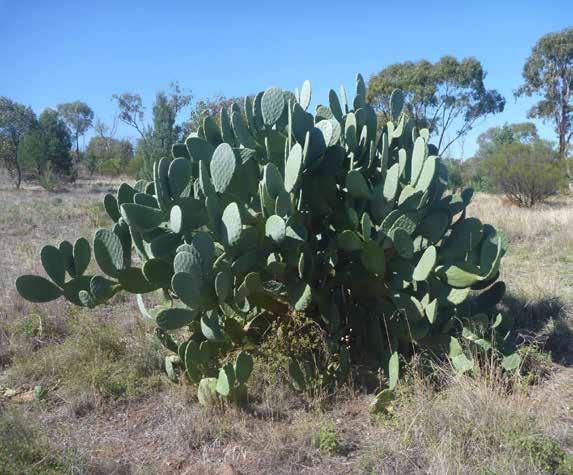
For further biosecurity duties, refer to the Biosecurity Act 2015 and your regional Strategic Weed Management Plans (published by each Local Lands Services region).
Correct identification is important for the reporting and control of all cacti. Local Council Weeds officers can help with this or refer to WeedWise www.weeds.dpi.nsw. gov.au
Landholders and residents can enter the contact details of their local council weeds officer, and then directly report sightings of state priority weeds via email.
Weeds professionals can share information about a weed with clients via email, including a weed’s profile, bio-security duties, control advice and herbicide options.
NSW WeedWise includes the content contained in the NSW Weed Control Handbook, a free, publication from NSW Department of Primary Industries. Visit WeedWise for more information.
How invasive is your cactus?

3 | CACTUS QUARTERLY
The Harrisia cactus weevil: A biological control agent reintroduction
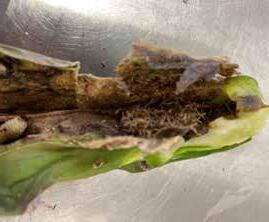

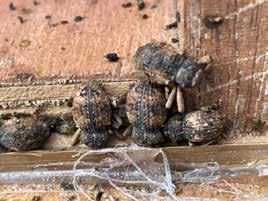
Harrisia cactus (Harrisia martinii) is a serious agricultural weed, negatively affecting pastoral productivity and ecosystem service.

This South American native is thought to have been introduced to Australia, possibly as an ornamental plant, and has since become invasive in parts of Australia, mainly in Queensland and northern NSW (Figure 1, next page).
The Queensland government invested significantly into the development of biocontrol solutions for this weed in the 1970s, ultimately leading to the release of three insect agents; the mealybug (Hypogeococcus pungens), the beetle (Nealcidion cereicola) and the weevil (Eriocereophaga humeridens).
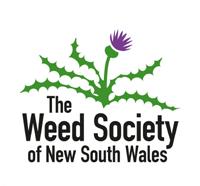
The mealybug was so successful in central Queensland, that it was thought to have out competed the beetle and the weevil, leading to their field populations not persisting. However, in recent times it has become apparent that the mealybug may be limited by cooler climatic conditions in the southern part of Harrisia’s invaded range. As a result, renewed interest has been directed to re-introducing the beetle and weevil for use as biocontrol agents in southern Queensland and northern NSW.
With NSW Department of Primary Industry funding, a collaboration was established with the University of Blumenau, Brazil (Prof. Marcelo Vittorino’s laboratory) to recollect, test and export a new culture of the weevil, E. humeridens. NSW DPI staff visited the University of Blumenau in May 2023 (Figure 2), on the back of attending International Symposium on the Biological control of Weeds in Argentina, and hand carried a culture of the Harrisia cactus weevil back to Australia.
Since being introduced into the quarantine facility at NSW DPI’s Orange Agricultural Institute, the focus has been on establishing a healthy colony of the weevil (Figure 3). Once that is achieved, testing will be conducted to confirm the weevil’s host range (i.e., what it feeds and
develops on), confirming and updating the testing that was conducted in the 1970s by the Queensland Government. In addition, molecular studies will be undertaken on historical and recently collected specimens, confirming that the entity in quarantine is the same species that was introduced to Australia over 50 years ago.
Once the aforementioned data is compiled, the Federal Government will be engaged to request permission to release E. humeridens from quarantine.
For further information, please contact Dr Asad Shabbir, asad.shabbir@dpi.nsw.gov. au or Dr Andrew McConnachie, Andrew. mcconnachie@dpi.nsw.gov.au
How invasive is your cactus?
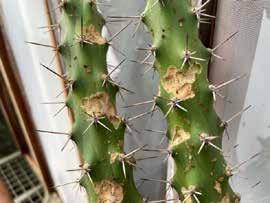
4 | CACTUS QUARTERLY
Figure 3. Eriocerophaga humeridens (a) adult weevils, (b) their feeding damage on Harrisia segments, (c) a developing larva, and a (d) pupal cocoon inside a Harrisia segment.
JOIN THE WEED SOCIETY OF NSW and get all the benefits! JOIN NOW! www.wsnsw.net.au
Figure 2 - NSW DPI staff interacting with Prof. Vitorino and his team at the University of Blumenau, Brazil.
The Harrisia cactus mealybug: Making the most of this biocontrol agent in NSW
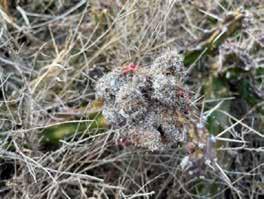
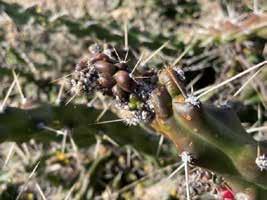
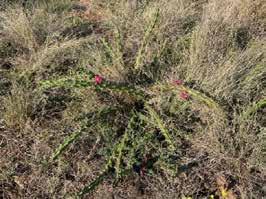
The cactus mealybug Hypogeococcus pungens (formerlyH.festerianus) lives in colonies and feeds on stems, buds, and fruits of Harrisiamartini,Harrisiapomanensis, and Harrisia tortuosa, causing deformed growth and eventually plant death.
NSW DPI’s Grafton Primary Industries Institute received a parasite/predator-free culture of the mealybug from Royce Holtkamp 12 months ago.


This healthy culture has allowed increased rearing of the mealybug at the state massrearing facility in Grafton, NSW. The mealy bug is reared in 50l tubs, that are filled with fresh, field-collected cladodes (segments), before releases are made in the field. This project is jointly funded by the New South Wales Department of Primary Industries (through its Weed Action Programme) and the Australian Government.
Field releases have focussed on Harrisia cactus in the Twin Rivers area of Inverell Shire, where the greatest concentration of known Harrisia infestations occurs in NSW (Figure 1Atlas of Living Australia map of Harrisia (circled area of northern NSW and southern QLD, indicating our study area). There is also a lot of Harrisia in the southern Queensland region just north of our release area. Inverell Shire Council biosecurity officer Geoffrey Riley assists in releasing the mealy bug and in harvesting fresh cladodes to keep our culture going.
To measure how effective the mealybug is at controlling Harrisia, NSW DPI staff have established a long-term impact study on the biocontrol agent. Its impact is being assessed at two sites, each of which have a release areas and biocontrol-free control sites nearby (Figure 2 - Healthy fruiting Harrisia cactus growing among lightly grazed native grass at one of the control sites - mealybug-free).
Field monitoring commenced in February 2023 and involves measuring the size of plants in relation to the mealybug population present, as well as dispersal of the agent. Over time, the field monitoring will help NSW DPI scientists to understand the effect mealybug feeding has on the cactus’s growth and survival, in comparison to where they are absent.
With only six months of data so far, it is too early to draw conclusions on how the monitoring sites are responding to the mealybug. Initial impressions suggest the height of mealybug-infested plants have reduced, even with low insect numbers being present. There is clear evidence of distorted growth tips and damaged fruit, including some dead cladodes and plants (Figure 3 - Close-up of mealy bug numbers and beginning of tip distortion on Harrisia cactus. The yellow blotches are a type of scale insect and the white dots at the end of a stalk are lacewing eggs.).
The mealybug populations are having to overcome native lacewing predation, with researchers finding high concentrations of this predator’s eggs close to mealybug-infested plant parts (Figure 4 - Heavily infested growth tip of Harrisia cactus also with lacewing eggs visible.). In addition to lacewings, feral pigs uprooting Harrisia plants in one of the trial areas, so interfering with the mealybug’s progress (Figure 5 - Evidence of feral pigs uprooting Harrisia cactus.).
NSW DPI researchers will continue to rear, release and evaluate the Harrisia mealybug over the next couple of years, thanks to the State and Federal funding that is supporting this work.
For enquiries, please contact: David Officer, david.officer@dpi.nsw.gov.au or Fritz Heystek, fritz.heystek@dpi.nsw.gov.au, Grafton Primary Industries Institute.
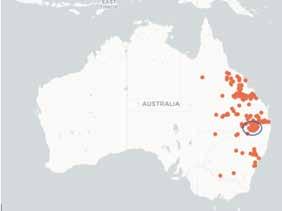
To obtain biocontrol agents,complete the online form.

Caption: Figure 1
Caption: Figure 2
Caption: Figure 3
Caption: Figure 4
Caption: Figure 5
5 | CACTUS QUARTERLY How invasive is your cactus?
Collaboration the key to success
Lightning Ridge hosted their annual opal festival this year in July, continuing with their community engagement and educational program Castlereagh Macquarie County Council (CMCC).
Staff Andy Fletcher-Dawson and Mat Savage were joined by Debi Bancroft Northern Slopes Landcare Association (NSLA) and Todd Pallister from Local Land Services (LLS).
This collaboration once again highlights the working relationship between these government and non-government agencies. The stall was mainly attended by local and part time locals whose main concern was the Hudson Pear, but many voiced their concerns that other cacti in the region had the potential to cause the community the same amount of damage Hudson pear has caused.
Mass-rearing facility in Lightning Ridge
Do you have Hudson pear on your property? (Dactylopius tomentosus‘californicavar.parkeri’lineage)!
The Hudson pear (Cylindropuntia pallida) biocontrol agent is available at the Lightning Ridge mass rearing facility.
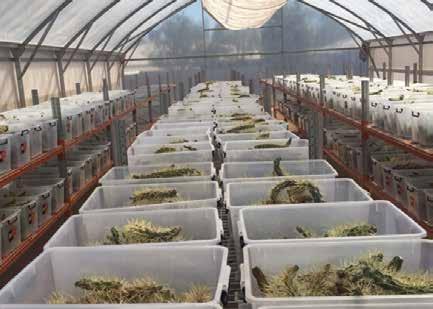
The biocontrol mass-rearing facility at Lightning Ridge is fully stocked with Hudson pear cochineal and they are ready to be released.
Call Mat Savage on 0427 253 463 and he will be happy to help you access your plastic tub for collecting clean Hudson pear segments. Then all you must do is swap your tub of clean segments for a tub of cochineal infected segments. Mat will guide you through the process of how to release the cochineal and record the release information.
For more information on all chemical control of Hudson Pear contact Todd Pallister 0457 939 055
Correct identification of cacti was also requested, with staff on hand to discuss the importance of proper identification for control, and best practice for management, with resources handed out for future reference.
Control methods, and what is currently being used against Hudson Pear and other cacti, continued to be the main topic of conversation. A large percentage of property owners were prepared to help with cactus control, accessing the free chemical and biocontrol program, both of which continue as incentives for the public to get involved in the control of these invasive weeds.
Annual NSW Weeds Conference wrap-up
Once again, the conference held at the Dubbo Regional Convention Centre, in August was a huge success with approximately 350 attendees from NSW and interstate attending.
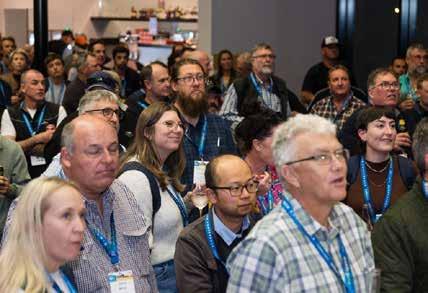
This biennial event was hosted by Dubbo Regional Council and the Weeds Society of NSW.
This is a premier event discussing weeds, their management, impact, and latest research. Delegates, representing 132 organisations (half of which were Biosecurity Officers) spent a stimulating few days listening to talks on the latest weed research. In addition, the conference gave attendees time to network and share ideas while having a good laugh with their work mates.
The quality and diversity of the keynote speakers was exceptional, with all sessions well attended.
How invasive is your cactus?
6 | CACTUS QUARTERLY
Conference goers at the Annal NSW Weeds Conference. Photo credit: Abercrombie Events Management
Cactus control paramount for healthy enviroments
In 2019 the Parlimentary Inquiry into Decline of Koala in NSW was advised at the Gunnedah session, by a local CWA representative, that invasive cacti posed a significant threat to koala they moved through the landscape.
Very sadly it was also revealed at the Parlimentary hearing that the “Koala Capital” had seen a devastating collapse of their koala populations. Estimated as 75% decline from the previous decade. The disease chlamydia was also prevalent in the remaining koala populations at Gunnedah.
Koala decline across Australia is multifactoral. Landclearing, disease, drought, bushfires, increasing urbanisation leading to death from vehicle strike and dog attack are all included in the sad statistics of decline.
The NSW Parlimentary Inquiry into Koala Decline noted: “One of the major threats to koalas in the Pilliga forests is infected injuries from the introduced Tiger Pear cactus, Opuntia aurantiaca (Kavanagh et al. 2007). Koalas are also negatively affected by blackberry and other invasive species, which limit koala movement through the landscape.”
Introduced noxious weeds, especially cacti and other spiny invasive weeds such as blackberry and Africa Boxthorn, in remnant habitat has lead to reduced access for koalas to food trees and has resulted in injuries of koalas hands and feet making climbing both painful and difficult, if not impossible. This has left this arboreal species more prone to infection and predation.
At Bingara in 2019, during drought conditions, a feisty young male koala was found in town, accessing water from a
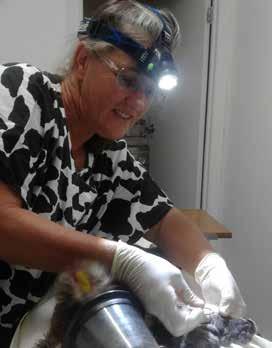
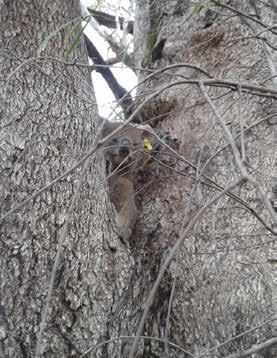
dripping residential tank. He was rescued by a WIRES volunteer and taken to Vet Michelle Coulton (now retired).
Otherwise healthy, the koala named ‘Sid’, was found to have numerous Tiger Pear barbs in his hands and feet and a painful abcess caused by one cactus spine in his wrist.
After successful treatment and a few weeks rest, Sid was successfully released at The Living Classroom, Bingara. He was spotted in a variety of trees for several weeks post-release, including sheltering in Wilgas when summer heat was extreme!
The koala (combined populations of Queensland, New South Wales and the Australian Capital Territory) was listed from Threatened to Endangered on 12 February 2022. Extinction in the wild is a possibility if threatening processes are not addressed for this beloved iconic Australian species.
Uncontrolled invasive cacti, especially Tiger Pear and Harrisia Cactus, have put koala and a great many other species of birds and animals, including livestock and humans, at risk of injury and possible death.
Cactus control is paramount for healthy farm environments, especially in koala country.
Submitted by Elizabeth Kakoschke, North West Regional Koala ARKS Landcare
7 | CACTUS QUARTERLY How invasive is your cactus?
Uncontrolled invasive cacti, especially Tiger Pear and Harrisia Cactus, have put koalas and a great many other species of birds and animals at risk of injury and possible death.
north west koala a.r.k.s.
Caption: Koalas are one of many species under threat from invasive cacti.
Caption: Former Vet Michelle Coulton attending to an injured Koala.
Castlereagh Macquarie County Council’s Mat Savage takes out prestigious awards
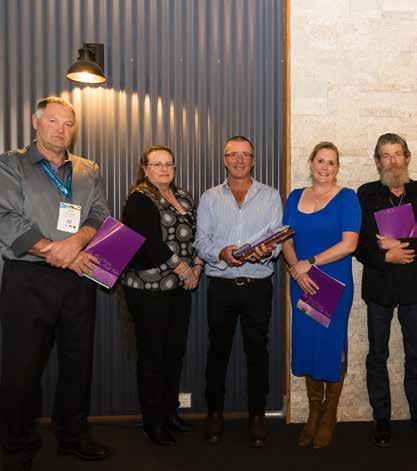
The 22nd NSW Weeds Conference was recently held at the Dubbo Convention Centre from the 7 to 10 August 2023. The conference showcased the latest research and ideas for managing the establishment, impact and spread of weeds.
Castlereagh Macquarie County Council Chairman Doug Batten said the forum is the premier event to discuss weeds and related vegetation and production issues.
This is a biennial event conducted in partnership with a host Council attracting 350 attendees from NSW and Interstate CMCC Chairman Batten said the conference also acknowledged the work of NSW Government, NSW Local Government and community weeds professionals for their outstanding contribution towards protecting NSW from the impacts of weeds.
Chairman Batten and his fellow Councillors were delighted to hear that CMCC Bio-security Officer Matt Savage had won two important awards at the event. Matt is Council’s Bio-security Officer based at Lightning Ridge and he also manages the Hudson Pear bio control centre operations.
Matt, was awarded winner of the prestigious Buerckner Award for his outstanding contribution to the on-ground control of weeds in NSW. Matt also won the inaugural NSW Weed Biocontrol Taskforce Award for his exceptional contribution towards adoption, planning, coordination, or on ground weed biocontrol in NSW.
General Manager Mike Urquhart said he was thrilled that Matt had taken out two major awards at the conference. “Matt is an extremely dedicated staff member with a great work ethic, and a passion for weed management and the use of bio control as an additional means for the control of noxious weeds”.
Tourism
The holiday season is fast approaching and we live in the best country in the world for camping and caravaning – don’t let invasive cacti become an unwanted hitchhikers.
Invasive, non-native cactus species spread easily and rapidly through the landscape. They are costly to manage and seriously destroy farm land and biodiversity.
They have the potential to not only harm travellers, but their pet companions. They also displace native flora and cause injury and sometimes death to native animals.

Invasive cacti have been found on tyres and shoes many kilometres from where they first attached, aiding their spread across the landscape.
How invasive is your cactus?
Mike went on to say “Council was so lucky to have such an outstanding and enthusiastic employee, congratulations and well done Matt”.
8 | CACTUS QUARTERLY
Caption: Mat Savage (middle) accepting his awards at the 22nd Annual NSW Weeds Conference in Dubbo
Caption: An inquisitive dog covered in Hudson Thorns. Photo credit: R Turner
HARRISIA

CACTUS
COME CLEAN GO CLEAN
Help prevent the spread of invasive cacti

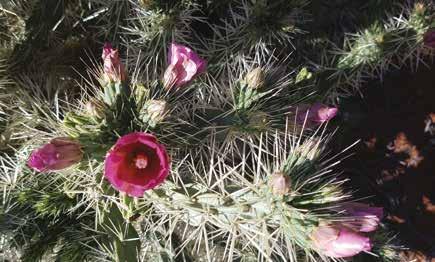
Driving
AVOID FLAT TYRES AND DAMAGE TO EQUIPMENT
Camping
AVOID INJURY TO PETS, PEOPLE AND DAMAGE TO EQUIPMENT
Stay in designated or cleared campsites, so it is easier to check for cactus plants – it will reduce your risk of injury or damage.
Checking
Before you leave a campsite or known infested area, check your vehicle’s undercarriage, including the inside and outside of your tyres, for attached cactus segments.
Cleaning
Cactus spines can penetrate even the toughest of boots. Check your boots and remove cactus segments and spines using pliers or a multi-tool.
Keep your backyard clean
Removing
If you find an attached cactus segment on your vehicle or equipment, ensure you remove with care using a pair of pliers or multi-tool.
Disposing
Place removed segments in a red-lidded bin if available. Otherwise, place it in the middle of another cactus of the same species or seal it in a suitable container until you can dispose of it in a red-lidded bin.
If you see a unique looking cactus specimen, do not be tempted to collect it as even small segments can lead to invasive spread with associated costs and impacts.
Disclaimer: The information contained in this publication is based on knowledge and understanding at the time of writing (June 2020). However, because of advances in knowledge, users are reminded of the need to ensure that information upon which they rely is up to date and to check currency of the information with the appropriate NSW Government department. For more information, download the NSW WeedWise App

How invasive is your cactus?

9 | CACTUS QUARTERLY
NORTH WEST
The spines of cacti may cause flat tyres and damage to camping equipment. Avoid these by staying on designated routes. HUDSON PEAR
Cacti and most succulents are not native to Australia and can be highly invasive if not managed appropriately due to being drought tolerant and highly adaptable.
Take a photo instead and report its location to your local Biosecurity Officer or NSW Department of Primary Industries on 1800 680 244
Cactus case study - Harrisia
How invasive is your cactus?
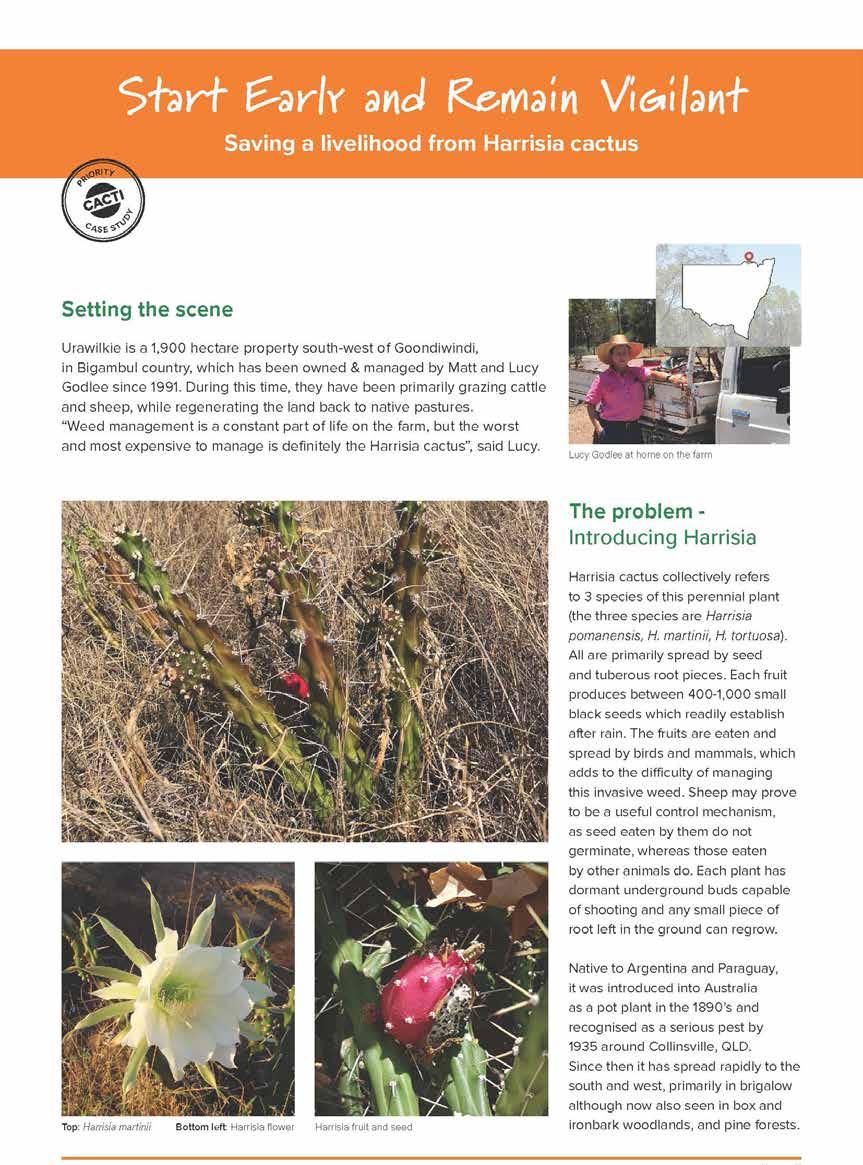
10 | CACTUS QUARTERLY
Cactus case study - Harrisia
How invasive is your cactus?
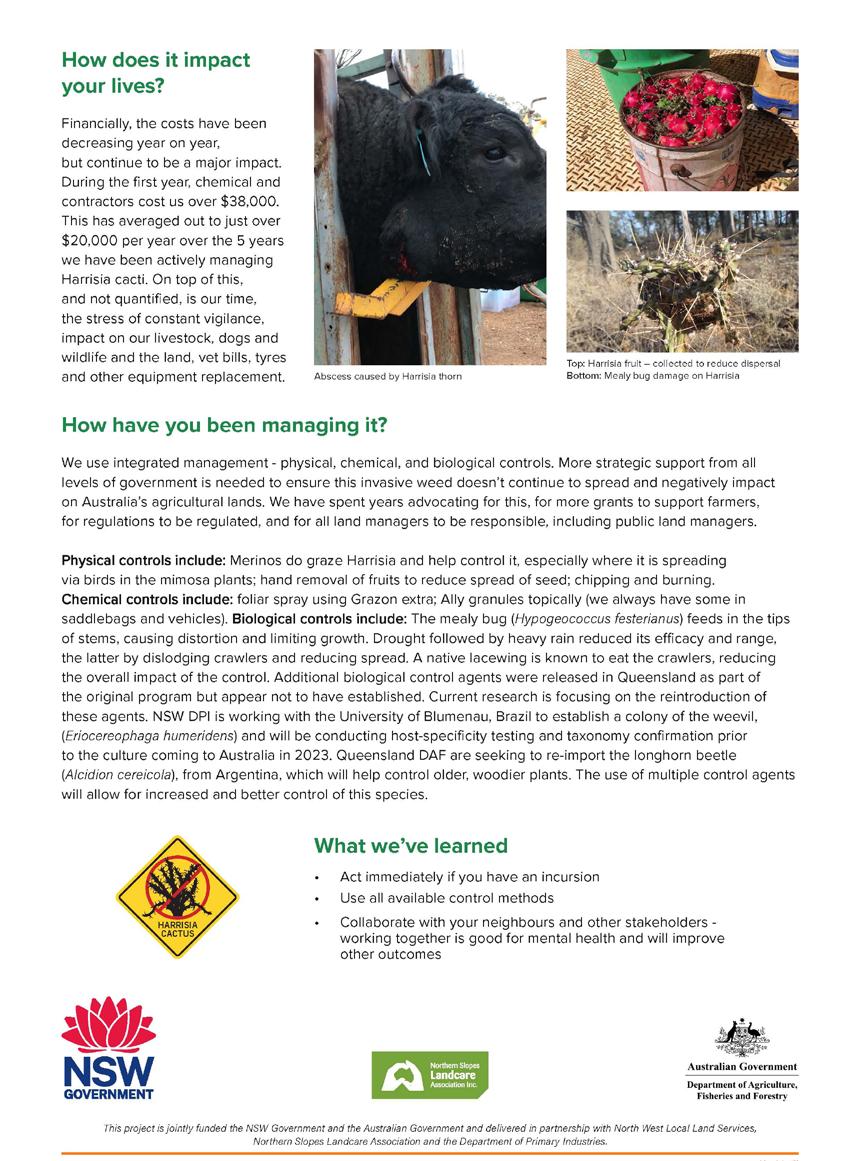
11 | CACTUS QUARTERLY

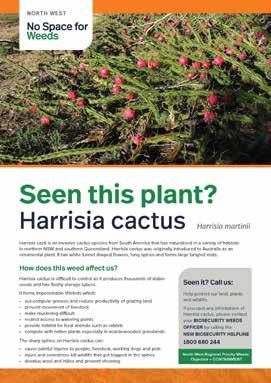

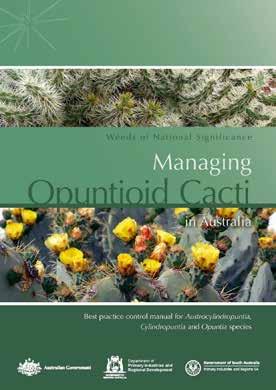
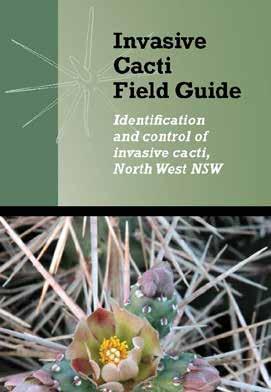

12 | CACTUS QUARTERLY How invasive is your cactus? Resources to download Hardcopies are available from Northern Slopes Landcare Bingara cacti@nsla.net.au Check out our videos at Northern Slopes Landcare The playlist includes videos on: • what is Hudson pear • what cochineal look like; • where to collect cochineal; • how to collect, transport and collect cladodes; • how to release cochineal and • further integrated control option. Visit: northernslopeslandcare.com.au/cacti/cacti-news-media/ cactus-news They are also available on a handy, credit card sized data stick, available at various locations around Lightning Ridge, Grawin and Cumborah or email weeds@dpi.nsw.gov.au Hudson pear (Cylindropuntia pallida) Playlist

13 | CACTUS QUARTERLY How invasive is your cactus?
Hardcopies are available from Northern Slopes Landcare or download a copy
Resources to download

14 | CACTUS QUARTERLY
invasive is your cactus? Senior Weeds Officer Lee Amidy - 0427 254 188 Neil Woboys - 0436 950 781 Address 63 Elgin Street Gunnedah NSW 2380 Postal Address PO Box 63 Gunnedah NSW 2380 Phone - 02 6740 2100 Email - council@infogunnedah.com.au Authorised Officer - Weeds Mike Whitney - 0427 961 980 Address 60 Station Street Quirindi NSW 2343 Postal Address PO Box 152 Quirindi NSW 2343 Phone - 02 6746 1755 Email - lpsc@lpsc.nsw.gov.au Bio-security Coordinator Clare Felton-Taylor - 0427 294 771 Bio-security Officer - Weeds Aaron Cross - 0429 202 205 Address 46-48 Maitland Street Narrabri NSW 2390 Postal Address PO Box 261 Narrabri NSW 2390 Phone - 02 6799 6866 Email - council@narrabri.nsw.gov.au Gunnedah Shire Council Liverpool Plains Shire Council Narrabri Shire Council
Weeds Officer Warialda Currently recruiting Weeds Officer Bingara Scott Revell - 0476 490 026 Bingara Office 33 Maitland Street Bingara NSW 2404 Warialda Office 52 Hope Street Warialda NSW 2402 Phone - 02 6724 2000 Email - mail@gwydir.nsw.gov.au Bio-security Officer Lachlan Biddle - 0408 204 577 Address Level 2, Max Centre 30 Heber Street Moree NSW 2400 Postal Address PO Box 420 Moree NSW 2400 Phone - 02 6757 3222 Email - council@mpsc.nsw.gov.au Senior Weeds Officer Mal Stein - 0429 821 579 Weeds Officer Robert Burr - 0419 271 593 Address Ray Walsh House 437 Peel Street Tamworth NSW 2340 Postal Address PO Box 555 Tamworth NSW 2340 Phone - 02 6767 5555 Email - trc@tamworth.nsw.gov.au Gwydir Shire Council Moree Plains Shire Council Tamworth Regional Council Senior Weeds Officer Andrea Fletcher-Dawson - 0428 462 060 Weeds Officer Mat Savage - 0427 253 463 Address 77 Fox Street Walgett NSW 2832 Postal Address PO Box 31 Walgett NSW 2832 Phone - 02 6828 6100 Email - admin@walgett.nsw.gov.au Castlereagh Macquarie County Council Debi Bancroft Phone - 0438 353 519 Email - cacti@nsla.net.au Cactus Quarterly Contact Hudson pear control program Bio-security Officer Rachel Turner - 0417 753 170 Hudson Pear Project Officer Todd Pallister - 0457 939 055 Sign up to Cactus Quarterly by scanning the QR code or sign up via our website.
How
Key Contacts North West Regional Weeds Officers




15 | CACTUS QUARTERLY How invasive is your cactus? Cactus Quarterly contact Atlas of Living Australia Australian Pesticides and Veterinary Medicinal Authority (APVMA) Biological Control DPI Department of Primary Industries (DPI) DPI Weeds NSW Biocontrol Weeds Taskforce NSW WeedWise North West Local Land Services (NW LLS) Weeds Australia PlantNET Weed Control and Identification Websites Further information Resources Australian Weed Strategy New South Wales Weed Control Handbook Invasive Cacti Field Guide Identification and control of invasive cacti, North West NSW Opuntiod Cacti Best Practice Control Manual Biological control of weeds NSW acts & regulations Biodiversity Conservation Act 2016 Bio-security Act 2015 EPA Pesticide Act 1999 EPA Pesticide Regulation 2017 Local Land Services Act 2013 Moree Office - 02 6750 9000 Warialda Office - 02 6729 1529 Narrabri Office - 1300 795 299 Tamworth Office - 02 6764 5900 Walgett Office - 02 6828 6400 Gunnedah Office - 02 6742 9220 Goondiwindi Office - 0428 432 784 Call 1300 795 299 to contact your Local Land Service office from Monday to Friday during business hours Or online at lls.nsw.gov.au/ourregions/ north-west/contact-us NSW Local Land Services Biosecurity Helpline - 1800 680 244 Primary Industries Weed Biocontrol (Weed Research Unit) weed.biocontrol@dpi.nsw.gov.au Invasive Plants and Animals enquiries - 1800 084 881 Vertebrate pest related matters invasive.species@dpi.nsw.gov.au Weeds related matters weeds@dpi.nsw.gov.au Department of Primary Industries Tell us what you think! The North West Local Land Services loves getting feedback! Scan the QR code or online










































